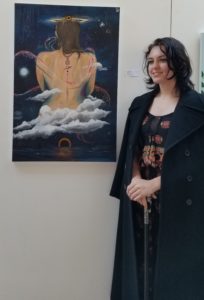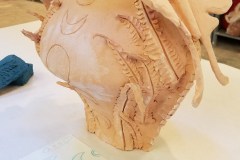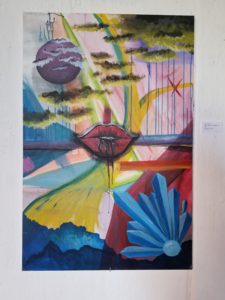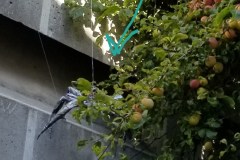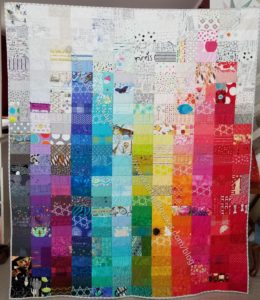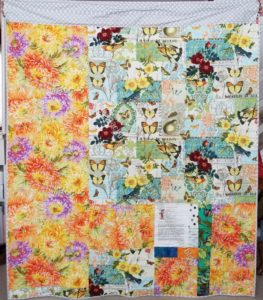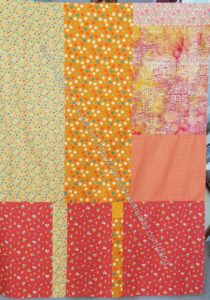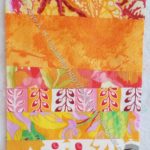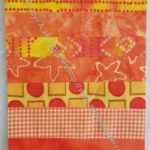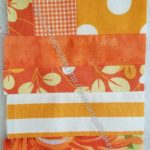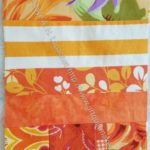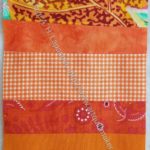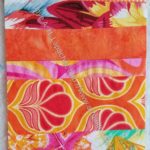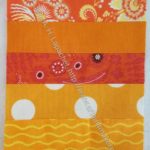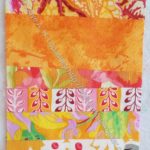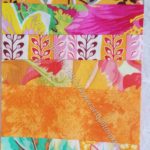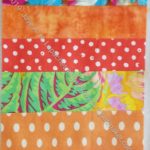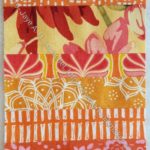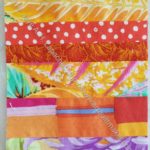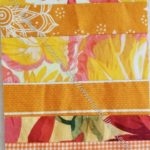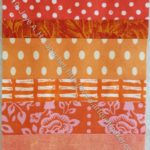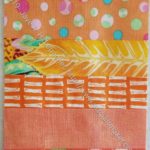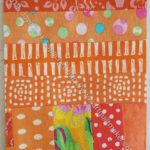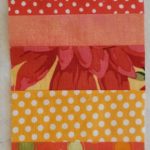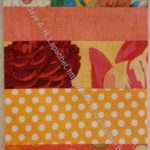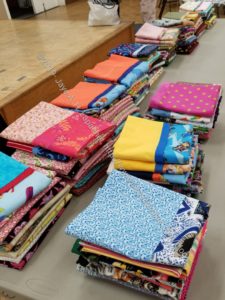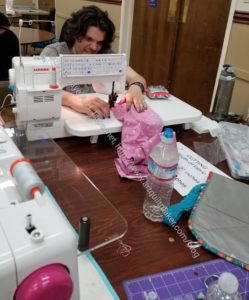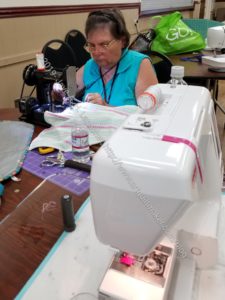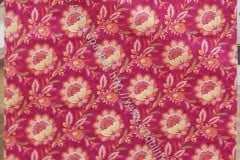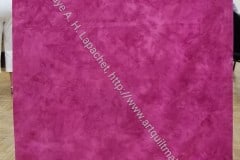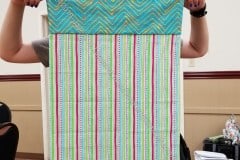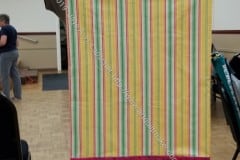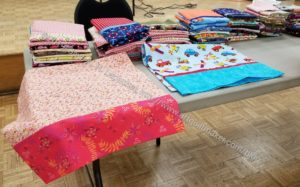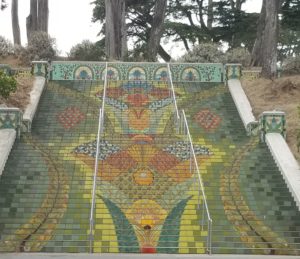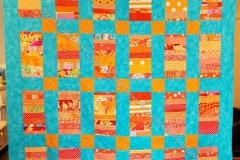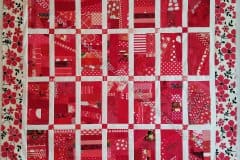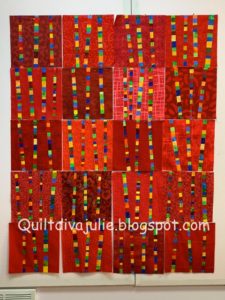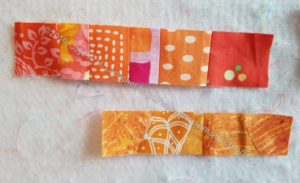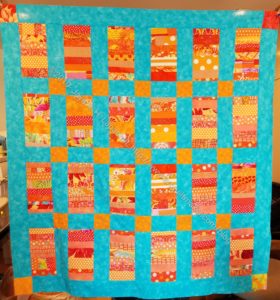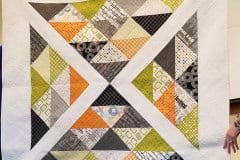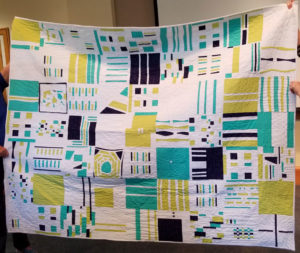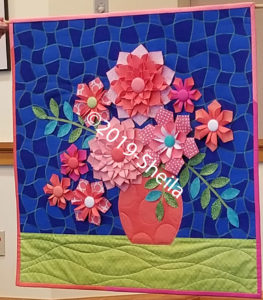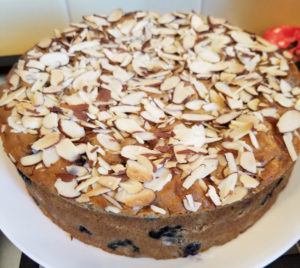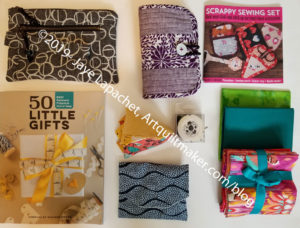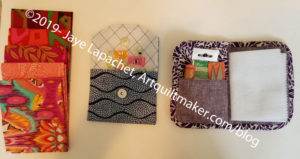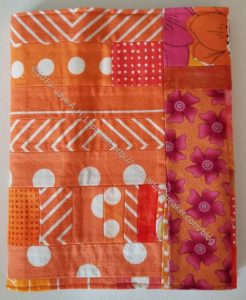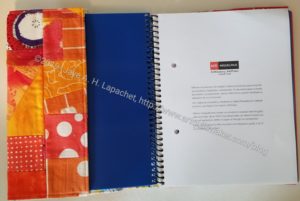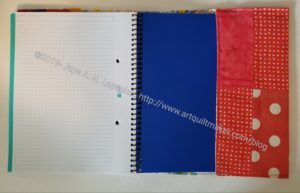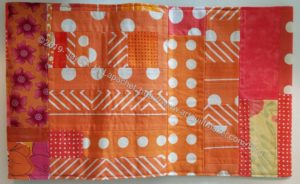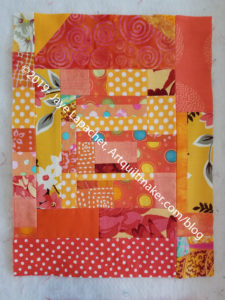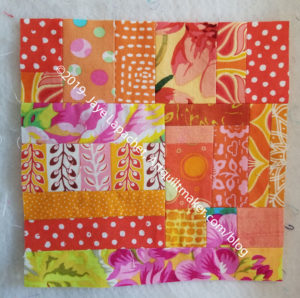 String Frenzy: 12 More Strip Quilt Projects; Strips, Strings & Scrappy Things! by Bonnie K. Hunter
String Frenzy: 12 More Strip Quilt Projects; Strips, Strings & Scrappy Things! by Bonnie K. Hunter
I wasn’t really interested in another project book until I saw the Straits of Mackinac project somewhere. I love the block and the way the overall quilt looks like it has curves even when there is no curved piecing. I looked at buying the book, but decided to see if my library had it first. I have many library cards and use them to excess! The system with the second closest branch didn’t have it so I ordered it using interlibrary loan (ILL). Then it occurred to me that it might be available from another branch in the system and I could have it delivered to the closest branch to my house. I thought ILL would take forever so I requested it again. Then I promptly forgot about the whole thing until both books came in on the same day!
This is basically a project book. It is about 95 pages, most of which are filled with patterns for the 12 quilt projects. The projects start on page 16 and end on page 89.
The book starts off with a dedication and acknowledgements (pg.3). A brief table of contents follows on page 4. One of my favorite things for project books is an overview of the projects page (pg.5), which is included in this book. The layout of the page shows a detail image of each project, gives the name and the page number. I like this because it is useful for going straight to the project in which you are interested. I, of course, went straight to the Straits of Mackinac project (pg.26)!
“…to think of stitching all of these small bits back together simply to cut a shape to sew to another shape and then another. But something happened when I did. I was no longer simply following a pattern or a design, but creating something unique that danced and dazzled before my eyes” (pg.6). This quote explains the true wonderfulness of quiltmaking. I am not completely sold on string piecing, but my strip donation quilts have brought me back to this concept. I may not want to make blocks from tiny pieces all the time, but I do see the allure of creating something unique that nobody else can create. I also see the value in using a lot of different fabrics to make a quilt shimmer.
I have found that “there is magic in the piecing. Every scrap is full of memories of the project from which it came – every color, texture, and bit of contrast. They might not look like much on their own,these humble little pieces, but together they are a symphony of beauty, each scrap a spot on the timeline of your life as a quilter” (pg.6). This sentiment is so true for me. Every morning I wake up and look at Scrapitude Carnivale and it makes me happy. I pull scraps out of my scrap drawers and think about the project in which I originally used it. That is one of the beautiful things about scrap quilts.
Of course, there are basic sewing guidelines, as every book seems to have. Bonnie has put her own stamp on it by assuming readers know what tools and supplies they need. She does mention a sewing machine in “good working order (to avoid frustration)” (pg.7), which is straightforward and useful. Since the projects use scraps, she tells readers how she calculated yardage and more about the project instructions (pg.7). You’ll have to wing it a little if you are using scraps, since they are usually not full yards or even FQs. Bonnie Hunter is famous for using scraps, so the “About Project Instructions” section briefly talks about the ins and outs of using scraps. She also mentions cutting binding strips (pg.7), which I don’t remember seeing in books like this.
Bonnie Hunter designed a specialty ruler called Fast2Cut Essential Triangle Ruler. This ruler helps make HSTs, QSTs and Flying Geese units. Hunter provides a picture and a brief description of the ruler in this section (pg.8). The ruler is a good addition to my Triangle Technique when you want to make one or two HSTs units rather than eight at a time. Not only does she show the ruler, but she shows how to use it for HSTs (pg.8), QSTs (pg.9-10) and Flying Geese (pg.10-11) units as well. Bonnie provides as chart near the Flying Geese instructions, so the reader can make different geese sizes. The ruler instructions have accompanying images, which make them easier to interpret.
‘Strings’ haven’t come up thus far in the book, but the author starts explaining what they are, how to make them and why to use them following the discussion of the Fast2Cut Essential Triangle Ruler (pg.11). The discussion includes the definition of a string and how wide strings should be (pg.12), using foundations with strings, easy paper removal and pressing (pg.13). One tip, which I didn’t know is not to use tracing paper or vellum since they will curl or shrink when touched with an iron (pg.13). Interesting!
After reading this book, I also now know the difference between a crumb and a string (pg.14). It turns out that the way I make my Improv donation quilts is crumb piecing and I use string piecing for the strip version. A project book can teach me something new, too, which is why I like to take a look at as many new books as I can. The book teaches the reader to build crumb blocks (pg.15) with briefl but mighty instructions.
Patterns start with Geese on a String (pg.16-21). No lifestyle shots in this book, just a nice flat photo of the whole quilt (pg.17), with sizes for blocks and the entire quilt given (pg.16). I like it that there are no surprises.
My favorites in the book are Serpentine Web (pg.22-25), which reminds me of my Spiderweb quilt re-imagined in a new and fun way. The yellow is a bit much, but also may make the quilt. Straits of Mackinac (pg.26-33) is my absolute favorite in this book. It has the feel of En Provence, with a new, different twist. I wouldn’t make it with the strips in the Peaky & Spike blocks like Bonnie does (too lazy?), but I would use a variety of fabrics. I also like Indigo-a-Go-Go (pg.84-89), thought not in those colors. The chain effect is a good use of 9 patches.
The patterns have a photo of the quilt flat so you can see the whole quilt along with some text that explains Bonnie’s inspiration or the fabric, which I like. There are also extensive materials lists, which do not include notions, machines, etc. These lists are for fabric, batting, etc. Hunter references tools, such as her Fast2Cut Essential Triangle Ruler in various places. Each pattern has some tips and tricks boxes, extensive construction notes from blocks to quilt assembly. As per usual, the finishing instructions are brief. The ‘At a Glance’ section in each pattern gives visual instructions for putting the quilt together.
The book ends with some foundation piecing patterns readers will need for various patterns. I recommend this book for a few projects you can sew as leaders and enders.

